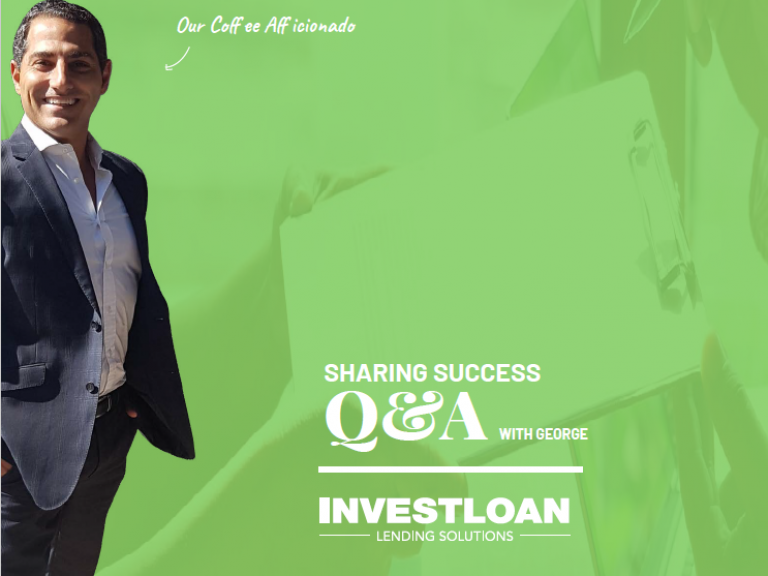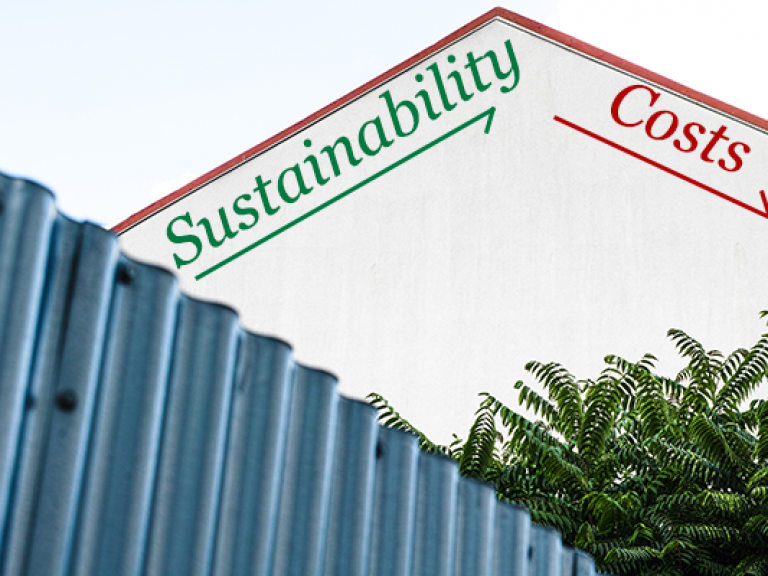Once, when I was in Africa, I saw this amazing animal: the impala. It can jump ten feet high for up to thirty feet (ten feet high!).
But in a zoo environment, the impala can be kept behind a fence that’s no more than four feet high. Why? Because and impala won’t jump over anything if it can’t see where its feet are going to land!
Are you a person who won’t jump over a hurdle unless you can see where your feet are going to land?

Think about it as you are about to embark on this new business venture. What are the things that might be keeping you behind the fence?
** What are the things that you can’t (yet) see – that you think you need to know before you leap?
** What information about these things can you obtain in advance – and what will have to stay unknown?
** What is the worst that you think can happen if you go in without ‘all’ the information?
** If a close friend of yours was hesitating to take action to fulfill a dream, citing these ‘worst case scenarios,’ what would you say to him or her?
Let me encourage you to leap. You can take it easy at first, if you wish – but leap! Because the path to success is full of obstacles, challenges and tests. And they’re not there just to make you stumble. They’re there to prepare you, to train you, to point you down your continuing path. There’s no such thing as failure: only signposts that will help you to find your true direction; help you to keep improving, keep striving, keep pushing towards your goals.
You’ll hear plenty of ‘failure’ talk. And ‘limits’ talk. People do that to you. But you don’t have to do it to yourself. Let’s talk ‘challenge.
“Never receive counsel from unproductive people. Never discuss your problems with someone incapable of contributing to the solution, because those who never succeed themselves are always first to tell you how. Not everyone has a right to speak into your life. You are certain to get the worst bargain when you exchange ideas with the wrong person. Don’t follow anyone who’s not going anywhere.” – Colin Powell, Former US Secretary of State.
Impala vs Lemmings
Whatever you set out to do there are going to be risks.
I coach a lot of business people, primarily in the area of wealth building. By far the hardest people to support in this way are accountants and lawyers. Why? Because their professional lives are built around eliminating risk, implementing controls and contingency plans with the utmost precision. Unfortunately, when it comes to business – and sport and, I suspect, many other fields of endeavour – this just doesn’t apply. Mums and dads from the back blocks take to real estate investment like ducks to water, while lawyers and accountants struggle. Striving to gather ever more information and develop ever more complex contingency plans to eliminate all possible areas of uncertainty and risk, they develop a classic case of ‘analysis paralysis’, and end up going nowhere.
How uncomfortable do you find risk and uncertainty? When you set off on your success journey, there will be times when you find yourself lost in the forest, with your torch running out of batteries: you’ll walk hopefully in the direction you think is the right one, praying that you’ll see light through the trees sometime soon – or any time. Will you be able to enjoy and learn from those times? Or will you stop dead, whip out the mobile phone and say: “beam me up, Scottie!”
Most worthwhile success paths require some tolerance for:
- Uncertainty: the unknown future, ambiguous signals, not being sure whether you’re on the right track.
- Risk: the possibility of loss, gambled against the chance of gain.
- Challenge: the times and circumstances that draw on all the resources you’ve got – and sometimes, more resources that you think you’ve got.

You’ll have an opportunity to assess your tolerance for these things, and explore some strategies that may work for you at either end of the scale.
It’s worth noting that some people are ‘impalas’: they are psychologically unable to leap unless they can see where their feet will land (and only then, if the ground is clear and solid). Other people are, frankly, ‘lemmings’: they’ll leap anywhere, even if it’s off a cliff! Let’s be clear: I’m not encouraging you to become a lemming.
* I’m encouraging you to get some of the lemming’s adventurousness into your life (I call this the ‘energiser’ response to risk and uncertainty). There will be times when we face the possibility of loss (risk). And there will be times when circumstances make heavy demands on our resources (challenge)
* At the same time, I’m encouraging you to develop some of the impala’s justified caution (I call this the ‘insurance’ response to risk, uncertainty, and challenge), so you don’t launch into challenges unprepared.
Uncertainty, Risk, Challenge – and Fear
It’s worth examining the role of fear in all this.
Uncertainty, risk and challenge are real factors in the outside world: conditions in the external environment in which we pursue success. There will be times when we don’t have all the information, and when the signals are ambiguous (uncertainty). There will be times when we face the possibility of loss (risk). And there will be times when circumstances make heavy demands on our resources (challenge).
Fear is an inside job. It is a physiological and psychological response, rooted in the oldest and most primitive parts of the human brain, to anything we perceive to be a threat to our safety, security or well-being. As human beings evolved, this was a very useful mechanism indeed: we faced extreme dangers from known and unknown sources all the time – and with the survival of the species at stake, it was just as well to get that prickling at the back of the neck, the flood of adrenaline and the little voice shouting “Run for your life!”
The trouble is that here in the twenty-first century, the mechanism is still there – and primed – even though we have eradicated a great many external safety threats from our lives. We are prone to perceived threats, and having fear reactions, where we really needn’t. We get ‘anxious’. And we tend to feel particularly threatened by uncertainty, risk, and challenge, creating a fear/avoidance reaction to situations that present them. They threaten our sense of being in control, our confidence, and competence, the things we are attached to: all illusory, ego-driven ‘securities’ that were never really ours to hold on to.
In fact, uncertainty, risk and challenge are often neutral – if not beneficial! The threat (or potential negative consequences) is rarely as bad as our fears make them out to be. Our fears build bogeymen out of the ordinary stuff of life: stuff that we could cope with perfectly well – if we weren’t so afraid! And of course, our fears tend completely to overlook the growth, learning, opportunities, potential ‘wins,’ glow of achievement, adrenaline rush and other upsides of trying something new and demanding.
We need to face uncertainty, risk, and challenge. Where there’s a real threat, we’re right to take action to protect ourselves and those we love. But we also need to stay alert to opportunities for growth, and creativity, and usefulness – and to seize them with both hands. It’s a matter of responding (choosing to act rationally and intentionally, on the basis of risk and opportunity assessment, in light of our goals) rather than reacting (acting automatically on the basis of unquestioned emotion). We need to lose the fear.
“A comfort zone is a beautiful place, but nothing ever grows there.”

A Word about the ‘Comfort Zone’
I guess we all know that experience of trying something new, or facing a challenge, which makes us feel uncomfortable: a bit embarrassed, stressed, vulnerable, or insecure. The little voice says: “Uh-oh. Not that’s a step too far! Retreat! Retreat!” It’s cold and dark and scary out there – of course we don’t like it!
We develop comfort zones for a good reason. They protect us. The signal we get when we’re outside the zone is a way of letting us know that we may be out of our depth: not yet equipped to deal with the situation. Then we have the option of withdrawing – in some circumstances – living to fight another day!
The trouble is that staying comfortable is a powerful force for an old enemy, inertia. It’s a killer of inspiration. The desire to stay comfortable – like the desire to stay safe – doesn’t want us to step out, move forward or change. It wants us to stay just the way we are.



There’s an old saying: ‘Comfort is a welcome guest whom you invite into your home, but who, if he stays too long, becomes your master.’
When it comes down to it, comfort is just comfort. We don’t have to be comfortable to be happy. We can’t be comfortable all the time if we want to grow – because learning and challenge and change are by definition, uncomfortable. It is precisely the discomfort – or ‘dissonance’ – that pushes us to make the adjustment, so that we can establish our equilibrium again.
It’s okay to enjoy, and rest in, our comfort zones from time to time. Take a breather. Heal up. Gather energy. But when the road calls you, be ready to push yourself out that door, if necessary. I guarantee you it’ll be worth it.
“The more time you spend in your discomfort zone, the more your comfort zone will expand.” Robin Sharma, Writer & Leadership Speaker.
>>> Coming Next: Insurance Strategies
Please note: This is an extract from the Success From Scratch – it may not contain the exercises from the full version of the book/audio set, for full version please contact us or follow our blog for more.
Thank you,
The team@Custodian








